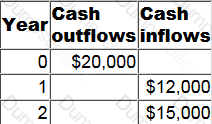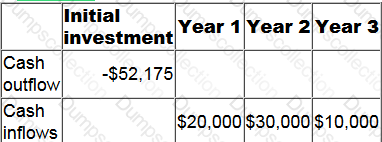CIMA Advanced Management Accounting P2 Exam Dumps: Updated Questions & Answers (December 2025)
PorkyCo is a leading bread manufacturer in Toyland operating two functional divisions: pulled and roasted. PorkyCo uses IT systems in all of its functions, for example, accounting has one system, manufacturing has its
system, warehousing has another and human resources is the latest to develop a dedicated system to manage training and development
The issue now is that when the CEO, Mr Button, needs information about two or more functions, he has to convene the department heads to get their reports and then study each in turn. As senior management
accountant at PorkyCo, help free up Mr Button's time by suggesting the most efficient way of getting all the information he needs.
In order to support decision making, management accounting information categorizes costs in a variety of ways.
Responsibility accounting primarily distinguishes between costs on the basis that they are either:
The following cash flows are forecast for a potential investment project.

The cost of capital for the project is 12% per year and the company uses a straight line depreciation policy.
What is the modified internal rate of return (MIRR) of the project?
Give your answer to the nearest whole percentage.
An organization wishes to make its investment decisions on the basis of more than simply a financial appraisal. Which of the following will assist it to take into account both qualitative and quantitative factors?
Which TWO of the following expressions are correct?
The cash flows from a project are detailed in the table below.

To the nearest 1%, what is the project's internal rate of return?
The discount rate at which the net present value (NPV) is zero is known as the
Which of the following is the ideal basis to use for a transfer price when there is a perfect external market?
K Supermarket spends $80,000 per year on checking and processing receipts of inventory. Annual warehouse costs are a further $70,000 per year. These costs are currently treated as fixed overheads in the company's costing system.
As an experiment, the company is preparing a direct profitability analysis of a small range of products, including fresh grapes.
K Supermarket receives a total of 3,600 deliveries every year. 20% of these deliveries are of perishable goods such as grapes. It takes twice as long to process a delivery of perishable goods compared to a normal delivery because perishable goods have to be checked more carefully.
Half of the warehouse costs are for the chilled store that is used to store perishable goods. At any time, the chilled store has 800 kilos of perishable goods in stock.
K Supermarket receives 150 deliveries of grapes every year. Each delivery is for 100 kilos of grapes. The grapes spend an average of two days in the chilled store before they are sold.
Calculate the total cost per kilo of checking, processing and storing grapes that should be taken into account in determining the profitability of grapes.
Give your answer to the nearest whole cent.
The Chief Executive of a large manufacturing company has made the following comment.
"All of our competitors are using both just-in-time(JIT) and Total Quality Management (TQM) whereas we have never used either. Consequently we are lagging behind our competitors because their levels of inventory and quality costs are significantly below ours. I want to see JIT fully implemented, both for purchasing and for production, in 4 weeks' time and TQM fully implemented 4 weeks after that."
Which of the following provide appropriate advice to the Chief Executive?
Select ALL that apply.

